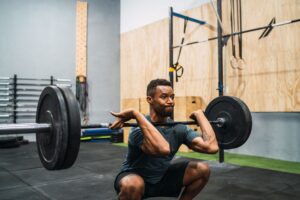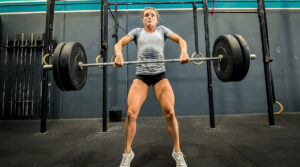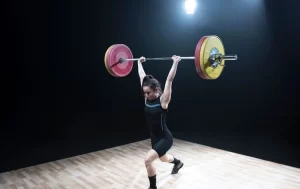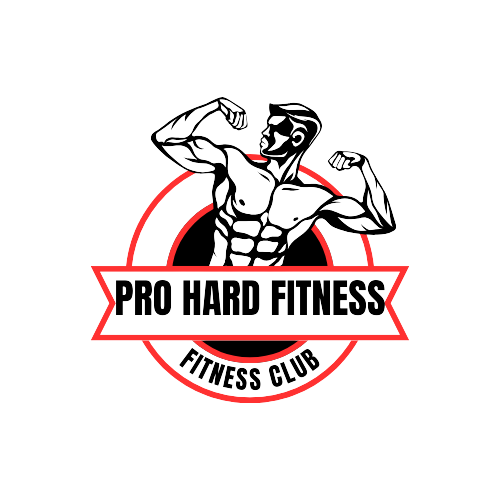The Ultimate Guide to CrossFit Workouts for Total Fitness
Introduction:

CrossFit, a revolutionary approach to fitness, has taken the exercise world by storm, redefining the traditional notions of strength, endurance, and versatility. Founded on the principles of varied, functional movements performed at high intensity, CrossFit is not just a workout; it’s a lifestyle that fosters total fitness. In this comprehensive blog post, we will explore the essence of CrossFit, delve into its methodology, and provide an extensive guide to various workouts that will help you unleash your full potential in the world of functional fitness.
Understanding CrossFit:
CrossFit is a high-intensity, constantly varied, functional movement fitness program that aims to improve overall physical performance. It incorporates elements from various disciplines, including weightlifting, cardiovascular exercise, gymnastics, and more. CrossFit workouts, often referred to as WODs (Workout of the Day), are designed to be scalable, making them suitable for individuals of all fitness levels.
Principles of CrossFit:
- Constant Variance: CrossFit promotes the idea that routine is the enemy. Workouts are constantly varied, preventing adaptation and ensuring that the body is continually challenged.
- Functional Movements: The focus is on movements that mimic real-life activities, promoting strength and flexibility that translate into improved daily functionality.
- High Intensity: CrossFit emphasizes high-intensity workouts that push individuals to their limits, fostering improvements in both cardiovascular and muscular endurance.
- Universal Scalability: CrossFit workouts are scalable, meaning they can be adjusted to suit the fitness level of each individual. This inclusivity is one of the reasons why CrossFit has gained popularity across diverse demographics.
Components of CrossFit Workouts:
- Weightlifting:
- Incorporates Olympic weightlifting movements like the snatch and clean and jerk.
- Focuses on powerlifting exercises such as squats and deadlifts.
- Gymnastics:
- Involves bodyweight exercises like pull-ups, push-ups, handstand push-ups, and muscle-ups.
- Develops skills such as balance, coordination, and agility.
- Cardiovascular Endurance:
- Includes high-intensity interval training (HIIT) through activities like rowing, cycling, and running.
- Enhances overall cardiovascular health and stamina.
- Functional Movements:
- Emphasizes movements that mimic everyday activities, such as lifting, carrying, and throwing.
- Aims to improve overall functional fitness for daily life.
Sample CrossFit Workouts:

- “Fran” – Benchmark WOD:
- 21-15-9 repetitions of thrusters (front squat into push press) and pull-ups.
- For time, with an emphasis on completing the workout as fast as possible.
- “Cindy” – AMRAP (As Many Rounds as Possible):

Amrap - 20 minutes of:
- 5 pull-ups
- 10 push-ups
- 15 air squats
- The goal is to complete as many rounds as possible within the time limit.
- 20 minutes of:
- “Grace” – For Time:

Grace - 30 clean and jerks for time using a moderate weight.
- The challenge is to complete all repetitions as quickly as possible.
- “Murph” – Hero WOD:
- 1-mile run, 100 pull-ups, 200 push-ups, 300 air squats, followed by another 1-mile run.
- Named in honor of Navy Lieutenant Michael Murphy, this workout is often performed on Memorial Day.
- “Annie” – For Time:
- 50-40-30-20-10 repetitions of double-unders (jump rope passing under the feet twice per jump) and sit-ups.
- The objective is to complete the workout with speed and accuracy.
- “Helen” – Benchmark WOD:
- 3 rounds for time of a 400m run, 21 kettlebell swings, and 12 pull-ups.
- Designed to challenge both cardiovascular endurance and muscular strength.
- “Diane” – Benchmark WOD:
- 21-15-9 repetitions of deadlifts and handstand push-ups.
- A time-based workout focusing on strength and upper body endurance.
- “Fight Gone Bad” – Multi-Station WOD:
- Rotating through five stations, spending one minute at each, with no rest in between.
- Stations include wall-ball shots, sumo deadlift high pulls, box jumps, push presses, and rowing.
- The goal is to accumulate as many reps as possible in each minute.
Building Your Own CrossFit Workout:
Designing a personalized CrossFit workout involves considering your fitness goals, skill level, and equipment availability. Here’s a simple framework to create your WOD:
- Choose a Time Domain:
- Determine the duration of your workout. Is it a quick, high-intensity sprint, or a longer endurance-focused session?
- Select Movements:
- Pick functional movements that align with your goals. Mix weightlifting, cardio, and bodyweight exercises for a well-rounded workout.
- Determine Repetition Scheme:
- Decide on the number of repetitions for each movement. Consider using the classic CrossFit rep schemes like 21-15-9 for time or an AMRAP format.
- Adjust Intensity:
- Scale the intensity based on your fitness level. Choose weights and movements that challenge you but allow you to maintain proper form.
- Include Rest or Active Recovery:
- Factor in rest intervals or incorporate active recovery movements to maintain intensity throughout the workout.
- Warm-up and Cool Down:
- Begin with a dynamic warm-up to prepare your body for the workout. Include stretches and mobility work in the cool down to aid recovery.
Benefits of CrossFit Workouts:
- Total Body Conditioning:
- CrossFit targets all aspects of fitness, including strength, endurance, flexibility, and agility, leading to overall conditioning.
- Community and Support:
- CrossFit is known for its strong community atmosphere. Working out in a group setting provides motivation and support.
- Adaptability:
- CrossFit workouts are scalable, making them suitable for individuals of all fitness levels and ages.
- Efficiency:
- CrossFit workouts are designed to be time-efficient, offering a comprehensive training session in a relatively short period.
- Functional Fitness:
- The focus on functional movements enhances your ability to perform daily activities with ease and reduces the risk of injury.
- Constant Challenge:
- The ever-changing nature of CrossFit workouts ensures that you are consistently challenged, preventing plateaus and promoting continuous improvement.
Challenges and Considerations:
While CrossFit offers numerous benefits, it’s essential to approach it with caution and consideration:
- Proper Form:
- Emphasize proper form over speed. Rushing through movements can lead to injuries. Seek guidance from certified coaches to ensure correct technique.
- Gradual Progression:
- Start with scalable workouts and gradually progress to more challenging routines. Listen to your body and avoid pushing too hard too soon.
- Rest and Recovery:
- Allow adequate time for rest and recovery between intense workouts. Overtraining can lead to burnout and increased injury risk.
- Nutrition and Hydration:
- Pay attention to nutrition and hydration, as CrossFit workouts can be demanding on the body. Maintain a balanced diet and stay hydrated.
- Individualization:
- Tailor workouts to your individual fitness level and goals. Not every CrossFit workout may be suitable for everyone, and modifications are encouraged.
Conclusion:
CrossFit represents a dynamic and inclusive approach to fitness that goes beyond traditional exercise routines. By embracing the principles of constant variance, functional movements, and high intensity, CrossFit workouts offer a pathway to total fitness. Whether you’re a seasoned athlete or just beginning your fitness journey, the versatility and scalability of CrossFit make it accessible to all.
As you embark on your CrossFit journey, relish the challenge, celebrate your progress, and embrace the community that comes with this fitness revolution. The beauty of CrossFit lies not only in the physical transformations but also in the mental resilience and camaraderie that accompany the pursuit of total fitness. Here’s to unlocking your full potential and experiencing the transformative power of CrossFit!
